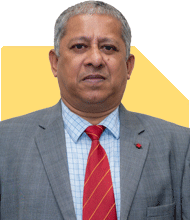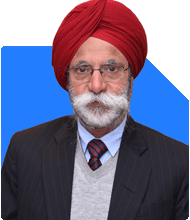47-Year-Old Looking for Investment Strategy for Retirement
Ramalingam Kalirajan |8093 Answers |Ask -Follow
Mutual Funds, Financial Planning Expert - Answered on Jul 27, 2024
He has an MBA in finance from the University of Madras and is a certified financial planner.
He is the director and chief financial planner at Holistic Investment, a Chennai-based firm that offers financial planning and wealth management advice.... more

I am 47 year old male, and am currently working. My wife is also employed. I have 43 lakhs - 23 lakhs in Mutual Funds and 20 lakhs in shares. My wife's investments is around 35 lakhs - 10 lakhs in Mutual Funds and 13 lakhs in shares. Apart from this we have around 10 lakhs in other savings. I want to retire when I am 55, and I want my wife to stop working within two years. If I am expecting a passive income of 1 to 1.5 lakhs per month, what should my investment approach be in next 7-8 years?
Your Investments:
Mutual Funds: Rs 23 lakhs
Shares: Rs 20 lakhs
Wife's Investments:
Mutual Funds: Rs 10 lakhs
Shares: Rs 13 lakhs
Other Savings:
Rs 10 lakhs
Total Investments:
Rs 76 lakhs
Goals:
Retire at 55
Wife to stop working in 2 years
Passive income of Rs 1 to 1.5 lakhs per month
Analysis and Insights
Current Situation:
Combined investments of Rs 76 lakhs
Need a strategic investment approach to generate desired passive income
Recommended Strategy
1. Diversify and Optimize Existing Portfolio:
Review Existing Investments: Ensure a balanced mix of equity and debt.
Rebalance Portfolio: Adjust to include more high-growth potential funds.
2. Increase Investment Contributions:
Regular SIPs: Increase SIP contributions to mutual funds.
Systematic Investment Plans: Continue monthly investments to build wealth consistently.
3. Debt Funds and Fixed Income Instruments:
Allocate to Debt Funds: Allocate a portion to debt funds for stability.
Fixed Deposits and Bonds: Invest in FDs, bonds, and other fixed income instruments.
4. Create a Retirement Corpus:
Target Corpus: Aim to build a corpus of at least Rs 3-4 crores.
Growth Strategy: Invest aggressively in the initial years, then shift to safer investments as you approach retirement.
Detailed Investment Plan
1. Equity Mutual Funds:
Allocation: Allocate 50-60% to equity mutual funds.
Diversification: Invest in large-cap, mid-cap, and flexi-cap funds.
2. Debt Mutual Funds:
Allocation: Allocate 20-30% to debt mutual funds.
Stability: Provides regular returns and stability.
3. Fixed Deposits and Bonds:
Allocation: Allocate 10-15% to FDs and bonds.
Safety: Ensures a safety net and steady income.
Steps to Achieve Financial Goals
1. Annual Reviews:
Regular Monitoring: Review investments quarterly.
Adjustments: Make necessary adjustments based on performance.
2. Increase SIP Contributions:
Gradual Increase: Increase SIPs by 10-15% annually.
Consistency: Stay committed to regular investments.
3. Emergency Fund:
Maintain Fund: Keep an emergency fund to cover 6-12 months of expenses.
Liquidity: Ensure it is easily accessible.
4. Tax Planning:
Efficient Planning: Use tax-efficient investment options.
Tax Savings: Maximize tax benefits on investments.
Final Insights
Balanced Portfolio: Maintain a balanced mix of equity and debt.
Disciplined Investing: Stay disciplined with regular investments.
Future Security: Focus on building a secure retirement corpus.
Best Regards,
K. Ramalingam, MBA, CFP,
Chief Financial Planner,
www.holisticinvestment.in
You may like to see similar questions and answers below
Ramalingam Kalirajan |8093 Answers |Ask -Follow
Mutual Funds, Financial Planning Expert - Answered on May 20, 2024
Ramalingam Kalirajan |8093 Answers |Ask -Follow
Mutual Funds, Financial Planning Expert - Answered on Jun 21, 2024
Ramalingam Kalirajan |8093 Answers |Ask -Follow
Mutual Funds, Financial Planning Expert - Answered on Jun 18, 2024
Ramalingam Kalirajan |8093 Answers |Ask -Follow
Mutual Funds, Financial Planning Expert - Answered on Jul 10, 2024
Prof Suvasish Mukhopadhyay |500 Answers |Ask -Follow
Career Counsellor - Answered on Mar 12, 2025
Milind Vadjikar |1106 Answers |Ask -Follow
Insurance, Stocks, MF, PF Expert - Answered on Mar 12, 2025
Milind Vadjikar |1106 Answers |Ask -Follow
Insurance, Stocks, MF, PF Expert - Answered on Mar 12, 2025
Milind Vadjikar |1106 Answers |Ask -Follow
Insurance, Stocks, MF, PF Expert - Answered on Mar 12, 2025
Milind Vadjikar |1106 Answers |Ask -Follow
Insurance, Stocks, MF, PF Expert - Answered on Mar 12, 2025
Dr Dipankar Dutta |956 Answers |Ask -Follow
Tech Careers and Skill Development Expert - Answered on Mar 12, 2025
Radheshyam Zanwar |1412 Answers |Ask -Follow
MHT-CET, IIT-JEE, NEET-UG Expert - Answered on Mar 12, 2025
Radheshyam Zanwar |1412 Answers |Ask -Follow
MHT-CET, IIT-JEE, NEET-UG Expert - Answered on Mar 12, 2025
T S Khurana |398 Answers |Ask -Follow
Tax Expert - Answered on Mar 12, 2025
T S Khurana |398 Answers |Ask -Follow
Tax Expert - Answered on Mar 12, 2025

























